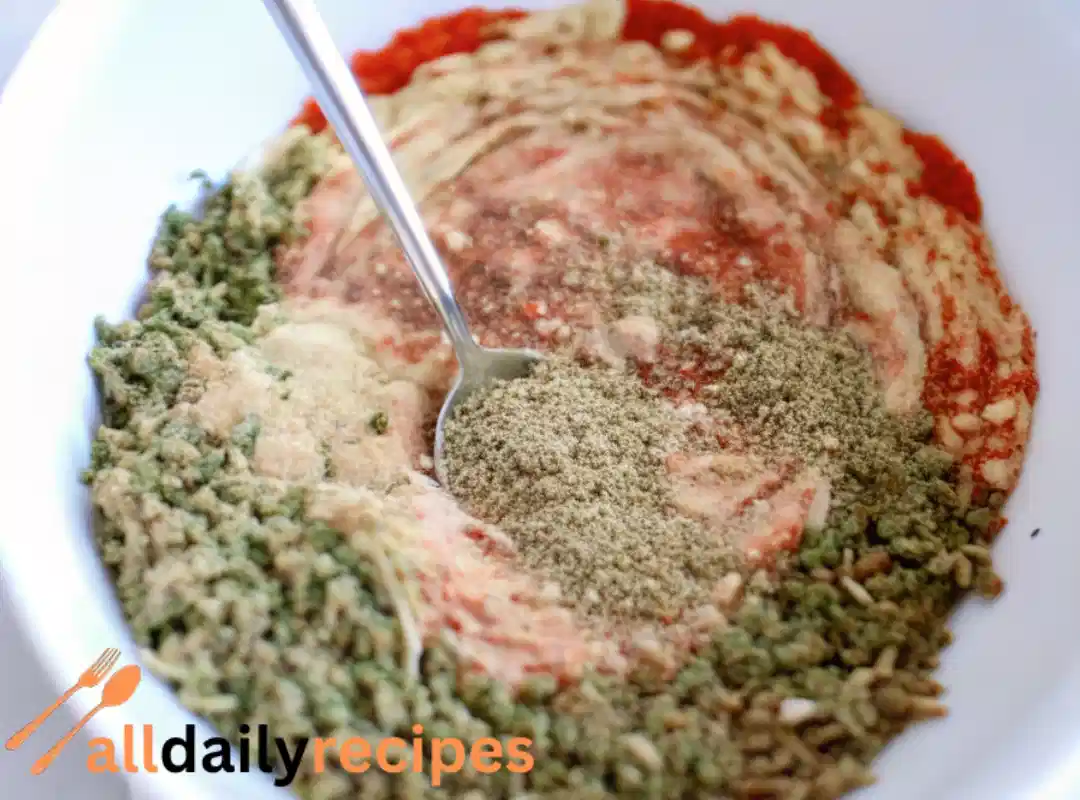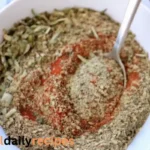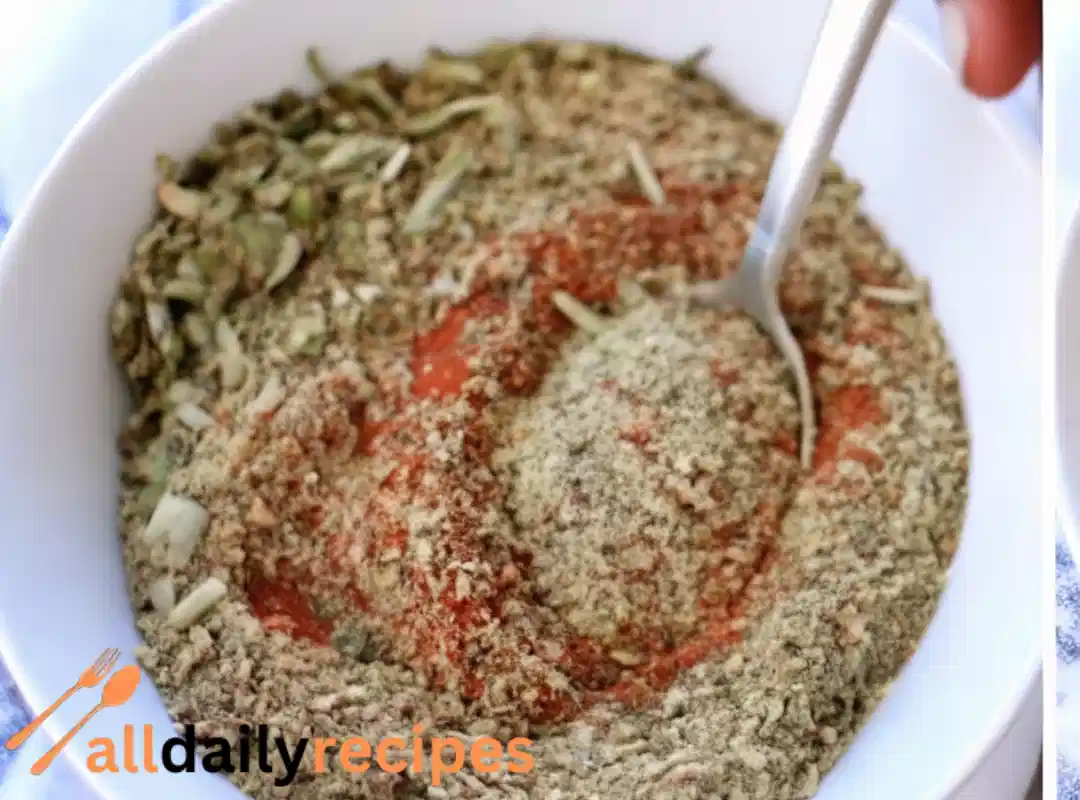Making your own beef stew seasoning gives you full control over the flavor and quality of your stew. Store-bought packets often include additives, preservatives, and high levels of sodium. Homemade seasoning lets you skip all that and stick to clean, natural spices that you probably already have in your pantry.
Another benefit of a homemade mix is customization. If you like a deeper flavor, add more smoked paprika. Prefer something herbal and light? Use more thyme and rosemary. You can also adjust the salt level to your taste and dietary needs.
Freshly mixed spices smell better and taste stronger. The aroma you get from grinding herbs yourself or just stirring them in a small bowl is instantly comforting. You also avoid stale or bland results that sometimes happen with prepackaged blends.
If you cook stew often, keeping a jar of this mix ready saves time and ensures consistency. You can double or triple the recipe and store it for months, using a spoonful whenever you start a stew. It’s simple, cost-effective, and more rewarding than reaching for a packet.
Table of Contents
Ingredients
This seasoning blend is made of a few common, flavorful spices that come together to create a balanced taste. Here are the typical ingredients and what each one adds:
- 2 tablespoons onion powder adds savory depth
- 1 tablespoon garlic powder brings warmth and aroma
- 2 teaspoons dried thyme adds an earthy, herbal note
- 2 teaspoons dried rosemary gives a slightly piney edge
- 1 tablespoon paprika adds rich color and subtle sweetness
- 1 teaspoon ground black pepper for mild heat and sharpness
- 1/2 teaspoon cayenne pepper (optional) adds a little kick
- 1 teaspoon salt balances and enhances flavor
- 1 teaspoon dried oregano adds a hint of sharp herbal flavor
You can adjust the blend to your liking. Leave out the cayenne if you prefer no heat. Add smoked paprika for a deeper flavor. If you want a more fragrant blend, a pinch of marjoram or crushed bay leaf works well too.
This combination creates a seasoning that pairs well with beef, vegetables, and the broth you use in stew. It balances sweetness, heat, earthiness, and a touch of brightness from the herbs.
How to Mix Your Seasoning Blend
Mixing your own seasoning takes just a few minutes. You don’t need fancy tools, but a little prep helps keep your blend consistent and fresh.
What you need:
- Small bowl or jar with lid
- Measuring spoons
- Whisk or spoon
Start by measuring each spice into a bowl. If your herbs are coarsely dried, crush them gently with a spoon or grind them lightly using a mortar and pestle. This helps release the oils and gives a more even texture.
Whisk all the ingredients together until fully combined. If you’re storing the blend, transfer it to an airtight jar or spice container. Label the jar with the date.
Store the mix in a cool, dry place away from direct sunlight. A pantry or spice cabinet is ideal. The blend will stay fresh for up to six months, but for best flavor, use it within three months.

How to Use the Seasoning in Beef Stew
This seasoning is made for classic one-pot beef stew. It works best when you use it in layers as you cook. Here’s how:
1. Season the Meat:
Toss your beef chunks with about 1 to 2 teaspoons of seasoning per pound before browning. This builds flavor early and creates a tasty crust.
2. Add to the Broth:
Once the meat is browned and vegetables are added, stir another teaspoon or two of the mix into your broth. This infuses the whole stew with layered flavor.
3. Taste and Adjust:
As the stew simmers, taste the broth. If it needs more flavor, add a pinch more of the seasoning blend. You can also stir in a bit just before serving for a fresh finish.
Avoid using too much early on. Start light and build up. This seasoning is concentrated, and a little goes a long way.
Variations and Flavor Twists
This seasoning blend is just the starting point. You can take it in many directions depending on your mood or what’s in your kitchen.
Spicy Version:
Add extra cayenne pepper or a pinch of crushed red pepper flakes. You could also try chipotle powder for heat with a smoky flavor.
Smoky Version:
Use smoked paprika instead of regular paprika. Smoked salt is another great option for a rich, deep taste.
Herb-Focused Blend:
Double the rosemary and thyme, and add a pinch of sage or marjoram. This makes a fragrant, herby stew that pairs well with root vegetables.
Mild & Savory:
Leave out cayenne and use sweet paprika. Add just a touch of cinnamon or nutmeg for a subtle warming flavor.
Regional Inspiration:
- For a Mediterranean touch, add basil and a hint of coriander.
- For North African influence, mix in cumin and a pinch of cinnamon.
- For Latin flair, try oregano, cumin, and a dash of chili powder.
Mixing up the flavors keeps the stew exciting. It also helps you match the seasoning to different ingredients or side dishes.
Troubleshooting Common Issues
Even the best seasoning blends can run into problems if you don’t measure or store them properly. Here are a few tips to help you fix common issues:
Too Salty:
If the seasoning mix is too salty, dilute it with more unsalted herbs like thyme or onion powder. In the stew itself, balance saltiness with more broth or add a raw potato to soak up excess salt.
Too Bland:
Add more paprika, garlic powder, or a pinch of cayenne. Fresh herbs stirred into the stew at the end can also lift the flavor.
Overpowering:
If your mix tastes too strong, especially from rosemary or pepper, try reducing the amount by half in future batches. A little sugar or tomato paste in the stew can help mellow bold flavors.
Clumpy or Sticky:
Moisture is the usual cause. Always use dry measuring spoons and store in a cool, dry place. If needed, drop a few grains of rice into the jar to absorb moisture.
Storage, Shelf Life and Potency Over Time
Proper storage is the key to keeping your seasoning mix fresh and flavorful.
Storage Tips:
- Use a glass jar with a tight lid
- Label with the name and date
- Store in a dark cabinet away from heat and sunlight
Avoid plastic bags or containers with loose lids. Light and air break down the essential oils in dried herbs and spices, reducing their flavor over time.
Shelf Life:
For best results, use the blend within three months. It can last up to six months, but the flavor starts to fade after the first few.
Boosting Older Mixes:
If your blend smells weak, toast it lightly in a dry pan for 30 seconds to refresh the spices. Or mix in a pinch of freshly ground herbs to revive it.
Making a small batch more often gives you better results, especially if you cook stew regularly.
Frequently Asked Questions
Can I use fresh herbs instead of dried?u003c/strongu003e
You can, but fresh herbs don’t keep well in a dry mix. Use dried for the seasoning blend, and stir fresh herbs into the stew at the end of cooking.
Can I double the recipe?u003c/strongu003e
Yes. Just make sure to mix it well and store it in an airtight container. Always label the jar with the new date.
Can I use this seasoning for other dishes?u003c/strongu003e
Definitely. It works well for soups, roasted vegetables, pot roast, or even sprinkled over baked potatoes.
What if I forget to season the meat before browning?u003c/strongu003e
No problem. Just add the seasoning after browning. The flavor will still develop as it simmers.
Conclusion
Making your own beef stew seasoning is simple and rewarding. It gives your stew more flavor, more personality, and none of the extras you don’t need. Once you try it, you’ll want to keep a jar of this blend on hand at all times.
Start with the basic recipe, adjust to your taste, and don’t be afraid to explore new twists. Whether you like bold spices or subtle herbs, this mix gives you the base to make your best stew yet.
If you find a version you love, write it down and make a bigger batch next time. Homemade seasoning is one of those small things that makes home cooking feel a little more special every time.

Beef Stew Seasoning
Ingredients
Method
- Measure each spice into a small bowl.
- If herbs are coarsely dried, crush them gently with a spoon or grind them lightly using a mortar and pestle.
- Whisk all ingredients together until fully combined.
- Transfer to an airtight jar or spice container if storing, and label with the date.
- Store in a cool, dry place away from direct sunlight.
- Toss beef chunks with about 1 to 2 teaspoons of seasoning per pound before browning.
- After browning the meat and adding vegetables, stir in another teaspoon or two of the mix into your broth.
- Taste the broth as it simmers and add a pinch more seasoning if needed.
- Avoid over seasoning; start with a small amount and build up.

